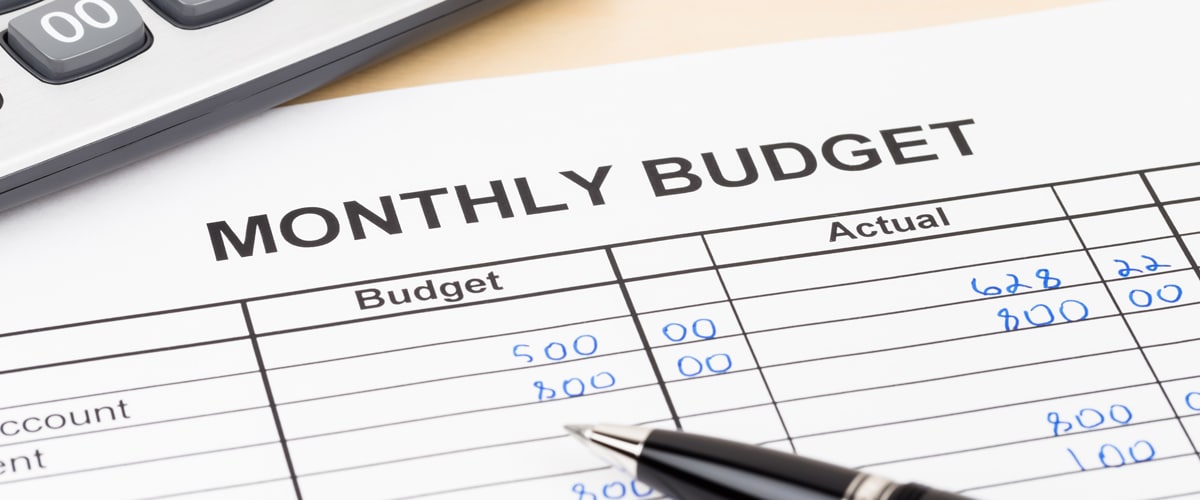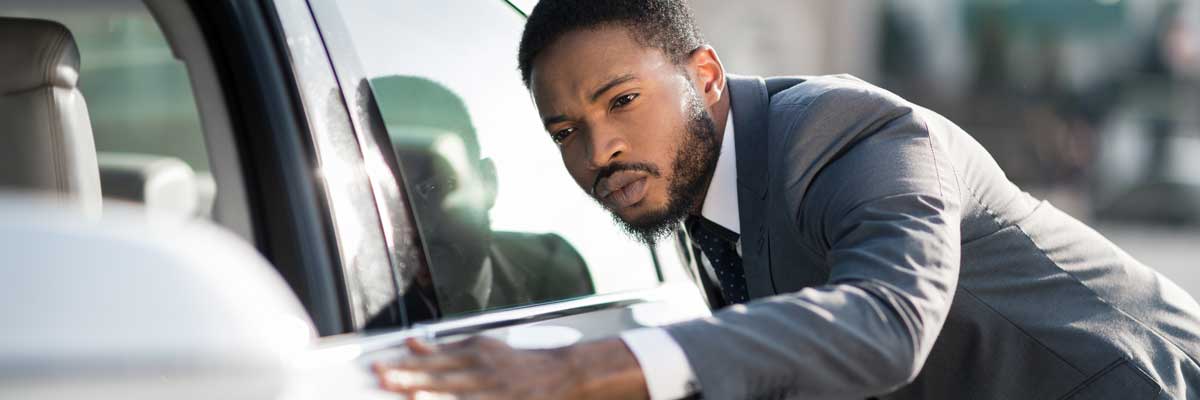What To Look for When Test Driving a Used Car
July 23, 2021
One of the most important steps when you buy a car, especially a used car, is the test drive. It doesn’t matter if you are buying it through a dealer or private party. Get behind the wheel to get a feel for the car which allows you to check to make sure everything works right. It helps to ensure you are making a smart decision. Here we will go over what to look for when test driving a used car.
Before the Test Drive
Before you do anything, you should really think about what kind of car you need and how it will meet your needs not only right now but, in the future, as well. Shop around. There are plenty of used car sites that you can use to give you an idea of the price of the type of car you want. Once you have found the type of car you want and you have an idea of the price, you’ll need to check to see how much you should spend on the car.
Our blog post, “How Much Should I Spend on a Used Car”, can help you to navigate the costs of ownership and give you a much more detailed look into your budget. Once you have the price range you’ll want to apply for a pre-approved loan with a bank or credit union. Doing so will ensure that you are able to receive adequate funds for your used car.
You’re Approved, Now What? | What To Look for When Test Driving a Used Car
So, you’ve been approved for a loan, you found the car you want to buy, next step is the test drive, right? Nope. Your next step should be running a vehicle history report with a company like Carfax. The report will tip you off to any issues that the used car might have that may not be visible on the test drive.
You’ll want to go over the vehicle history carefully to make sure that any necessary repairs have been made. When you should test drive is next on the list of what to look for when test driving a used car.

When You Should Test Drive
Once you have a good used car picked out and you’re ready financially to make an offer, it is time to take the test drive. But a test drive isn’t just about taking the car around the block. It’s a thorough examination of the car’s interior, exterior, and drivability. You don’t have much time to gather a lot of information so know what you are looking for during the test drive.
Where to Meet | What To Look for When Test Driving a Used Car
If you are considering buying a used car from a dealership then the choice is obvious, at the dealership. But what about if you are buying a used car private-party? The best course of action for private-party buys is to meet them at a neutral, high-traffic location like a mall or some kind of public meeting area, preferably with surveillance cameras. At some dealerships, if you don’t like having the salesman there with you on the test drive you can try and get a solo test drive.
You’ll want to test drive at a place that has easy access to a city drive feel but is close to a highway to test the engine and speed. Also, rough roads would be great to test on to listen for any prominent squeaks, rattles, or suspension issues. It could be a little hard to find a location that has all three types of conditions right by each other.
Examine the Exterior | What To Look for When Test Driving a Used Car
Take a close look at the body panels of the car. Make sure the paint color matches from panel to panel. Even slight variations in paint colors are a sign of poorly repaired damage. Be sure to look under the car to make sure there isn’t anything dripping or hanging down, make sure to look for any pools of fluid forming.
Kick the Tires | What To Look for When Test Driving a Used Car
Take a look at the tires. Do they match? How worn down are they? If they don’t match or have significant amounts of wear, that isn’t necessarily a deal-breaker. You’ll just have to add the cost of replacing the tires into your budget sooner rather than later.
Start the car and turn on the headlight and emergency flashers then take a lap around the car to make sure everything is working correctly. If a bulb needs to be replaced in one of the lights it’s not a deal-breaker just one more thing to add to your car budget.
Final Check | What To Look for When Test Driving a Used Car
One last thing, take a look at the exhaust. If it is blue or black then it could indicate that there is an engine or emission control system problem.
If you notice anything that could be dangerous then now isn’t the time to drive the car. A used car test drive isn’t worth the risk you could face if you were to get behind the wheel.
Inspect the Interior | What To Look for When Test Driving a Used Car
At this point, you’re probably thinking, “okay, when do I actually get to drive this thing?” We’ll get to that soon, there are just a few more things to check before getting behind the wheel and that’s the interior.
Jump into the driver’s seat and make sure you fit in the used car comfortably. Adjust the seats, mirrors, steering wheel, etc., and make sure you are able to clearly see your blind spots. If you are sitting there and can’t seem to get comfortable then it is important to realize that if you’re not comfortable on the test drive, you aren’t going to be any more comfortable once you buy the car. Once you have everything positioned the way you want it in the driver’s seat, hop in the back and see what kind of legroom your passengers will have.
If you are driving people around daily you’ll want to be sure you are buying a used car that will fit everyone comfortably. For those of you with children, this is the perfect time to check to make sure the child seat fits. The same applies to pet harnesses. Bring those with you to make sure everything fits well.
Make Sure the Features Work | What To Look for When Test Driving a Used Car
With the car started, start hitting all the buttons. Check to make sure the overhead lights work. If you notice any kind of dimming or pulsing it could indicate that the car has some electrical problems. Check to make sure the warning lights on the dash and indicators are all working correctly. If there are some that don’t seem to be working, be sure to make a list of things to check to give to the mechanic during your pre-purchase inspection.
Check the Tech | What To Look for When Test Driving a Used Car
Time to check the entertainment system. Turn on the radio and tune to your favorite station. Use the stereo’s balance and fade controls to listen to individual speakers. Make sure the sound is clean. The speakers could be blown if you hear any cracking or shorts in the audio. Plug your phone into the car’s aux or USB ports to ensure all the connections work. You don’t need to pair your phone to the car yet, save the Bluetooth till later.
Check to make sure both the A/C and the heater all work correctly. Adjust the fan and listen for any clicking or unexpected noises. Also, make sure you aren’t smelling any kind of burning or unpleasant when you are playing with climate control. That’s a big red flag. Cycle through all the different climate options to make sure the floor, dash, and defroster vents all work correctly.
The Basics | What To Look for When Test Driving a Used Car
Lastly, make sure all the basics like door locks, power windows, power rear door/tailgate, sliding doors, etc. are working. Additionally, make sure there are no weird noises or anything catching when you are using them. If the car has a moonroof, check along the perimeter to make sure there aren’t any signs of leakage. Check to make sure all the seat belts click in confidently and unlatch easily when you hit the release button.
Between the exterior examination and the interior inspection, you have quite the list to sort through. In the long run, it is worth going over every detail with a fine-tooth comb. You’re excited but you can’t skip over these details.
Road Review | What To Look for When Test Driving a Used Car
Here we are, the moment you’ve been waiting for. It’s time to get behind the wheel, start up the engine, and take your potential new car for a drive.
If you can convince the dealership or seller to let you drive solo, you should. Driving solo allows you to relax a little and gives you a better idea of how the car drives. Overall, the test drive is the most important place to really pay attention to the vehicle and your senses. Listen to the engine as you accelerate, the transmission as you go, and the brakes as you slow down. Use your eyes to make sure you are seeing everything you need to see. Check to make sure no warnings are coming up on the dashboard. These are simple things that are missed because you are behind the wheel of a car you’re potentially buying. You’re excited which is why you need to focus down and use your senses to experience how the car drives.
Run Some Tests | What To Look for When Test Driving a Used Car
Feel the brakes as you press down, pay attention to any squeaking noises. If your brakes squeak then you might just need to replace them, but it could hint at something else entirely. Another note to make for your pre-purchase inspection to check on. Identify any steering problems by holding the wheel loosely and taking your foot off the gas. Don’t let go of the wheel and only do this in an empty parking lot or someplace like it. The car should remain relatively straight as you slow down but will always pull ever so slightly to the right. The steering should never ever pull to the left as that could potentially lead you into oncoming traffic.
It is important to just take the ride in as a whole. Checking these individual things is essential but driving around and just feeling the car is just as important. If everything checks out and sounds good but you just don’t feel comfortable driving it, then don’t buy it. You want to like to drive your car. There’s nothing wrong with being picky.
Next Steps | What To Look for When Test Driving a Used Car
That’s it. You’ve successfully test-driven a used car. Now the fun part begins. Complete the pre-purchase inspection. Negotiate the sale price. Finalize the deal. Hit the road. And then all the paperwork that comes after the used car purchase. Don’t worry though. We have you covered. Read the blogs below for help with the next steps after the test drive.
How to Negotiate the Best Car Price
What to Do After Buying a Used Car
Buy, Sell, Trade, or Finance Your Car: Contact us
Find us on:
Facebook| Twitter | Instagram | LinkedIn | YouTube
Contact Us
